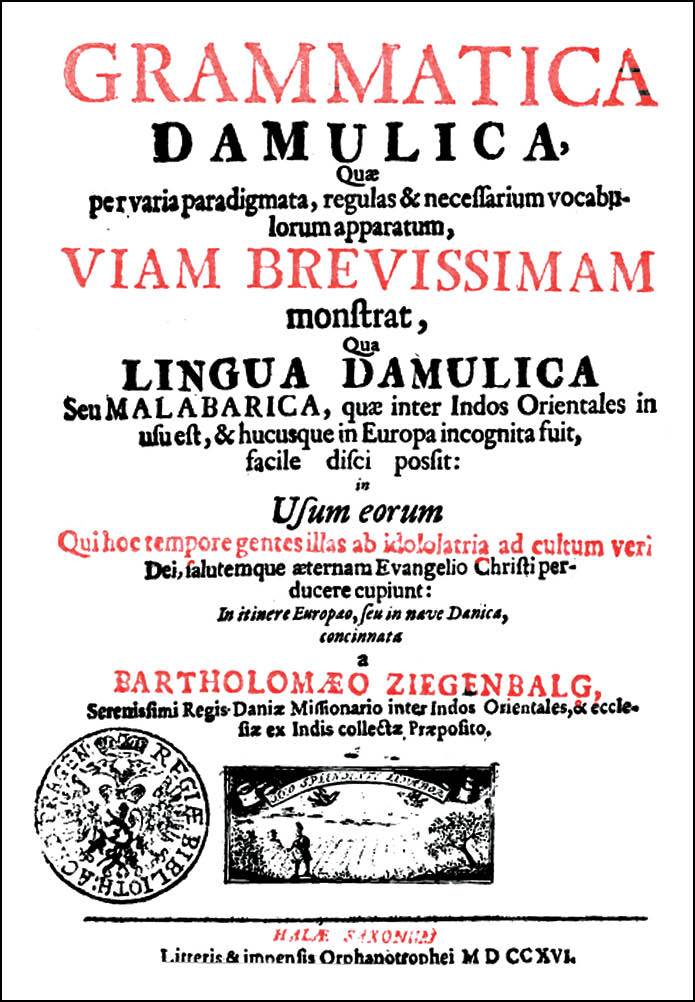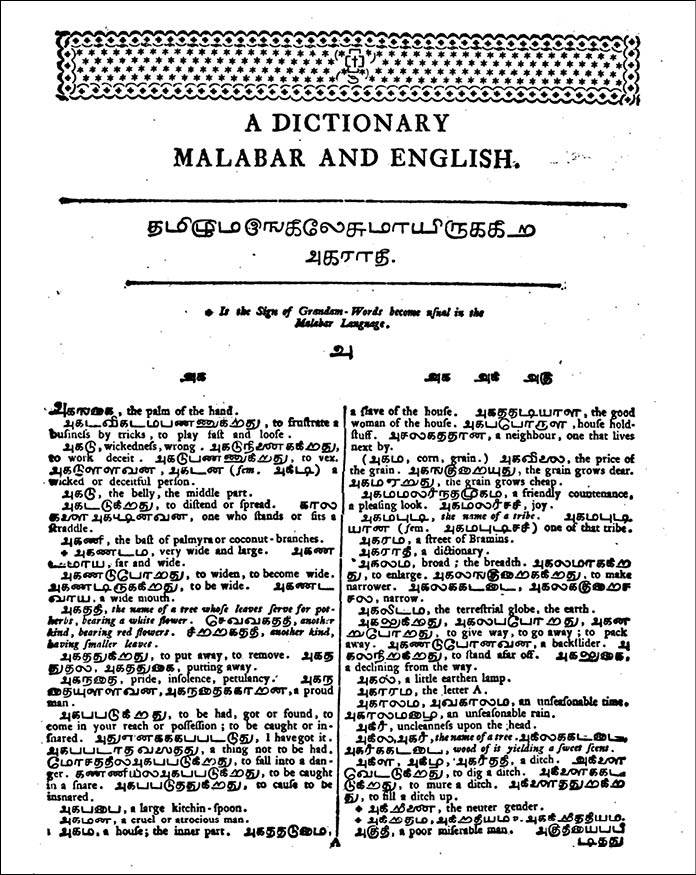Print History: Gérald Duverdier and Printing in 18th century India
The story of a French librarian who investigated the opening of a new chapter of printing in eighteenth century India and its European connections
28 Nov 2020 | By Murali Ranganathan
By the last decade of the eighteenth century, the three settlements – Calcutta, Madras, and Bombay – which the English East India Company had acquired in the seventeenth century had emerged as colonial cities. All three had begun to acquire the trappings of a print urbanity including local newspapers, a market for locally printed and imported books, and a steadily growing print infrastructure including printing presses and type foundries. Though much of the local print output was in English, printing in local languages was also gaining importance. These three cities went on to become the print capitals of their respective spheres of influence.
Modern-day print historians have largely focused on the print world which has emerged from these spheres of influence. Not as much scholarly attention has been engaged on the earlier efforts to establish print in India. By the 1950s, as new bibliographies were being published and historians were engaged in writing preliminary histories of print in India, there was a growing awareness of the existence of a vibrant print culture in some pockets of India in the eighteenth century.
Pre-nineteenth century imprints were being discovered in libraries all across Europe and it was becoming evident that the print history of India in the eighteenth century needed careful study. But source materials were scarce and most of them were in languages such as German and French. It would need decades of assiduous research to piece together the clues so as give an adequate picture of those times. Who was to undertake this painstaking labour? Enter Gérald Duverdier.
Becoming a librarian
Gérald Duverdier obtained a preliminary degree in German from the Sorbonne in Paris and then pursued advanced German studies at the University of Münster. From 1963 to 1968, he taught German before commencing his studies in librarianship. In 1969, Gérald Duverdier graduated at the top of his class in the École Nationale Supérieure de Bibliothécaires when he obtained his advanced degree in librarianship: Diplôme supérieur de bibliothécaire.
After graduation, Duverdier joined the library of the Collège de France, one of the most prestigious research establishments in France. Founded in 1530, the vast collections of its library spanned all subjects in the humanities and sciences and incorporated the collections of many other organisations. Duverdier probably gravitated towards the humanities and the German language collections.
One of Gérald Duverdier’s early research projects was the editing of the Peking notebooks of the Sinologist Paul Pelliot (1878–1945). As part of his studies on Chinese history, Pelliot had undertaken research on the history of printing in China in the 1920s which was published posthumously as Les Debuts de l’Imprimerie en Chine (1953). This connection could have been one of the inspirations for Duverdier’s sustained interest in print history.
In his initial years as a print historian, Duverdier explored the spread of printing to various parts of the Francophone world like Polynesia and the Levant. His first publication ‘La pénétration du livre dans une société de culture orale : le cas de Tahiti’ (1971) explored the impact of the printed word in an environment which heretofore only had an oral tradition. However, he seems to have soon narrowed down to the subject which was to make his reputation as a print historian: the development of printing in South India in the eighteenth century and its European inter-connections.

Tamil translation of Bible. Tranquebar, 1713
South India in the eighteenth century
At the start of the eighteenth century, the Moghul Empire under Emperor Aurangzeb was the dominant ruling authority though its influence in the extreme south of India was minimal. The Empire was already showing signs of rupture and it unravelled rapidly within a few decades after Aurangzeb’s death in 1707. While the Marathas aspired to a pan-India presence, numerous quasi-independent kingdoms emerged after the collapse of the Mughal Empire.
In South India, the new ruling powers included the Nizam of Hyderabad and Nawab of Arcot. Many European trading companies had already managed to get a toehold on the Indian coastline, generally with the blessings of the local ruler. If one travelled along a short 300-kilometre stretch of the Coromandel Coast spanning the modern states of Tamil Nadu and Andhra Pradesh, one could encounter a series of European settlements. The English had built the Fort St George near Madras, the French had acquired Pondhicherry and Cuddalore, while the Danes could claim Tranquebar.
The Dutch had a strong presence along the coast and their major settlements included Pulicat and Nagapatnam, located at either end of this stretch. By the 1750s, these European powers began to aspire to a larger political role in India and their traditional rivalries were played out in the Indian subcontinent. The English managed to get the upper hand in most of these encounters and by the end of the century were the paramount power in the Indian subcontinent.
These political upheavals, which were oftentimes accompanied by economic upheavals, influenced the fortunes of the printing press in India. Another factor which greatly influenced the future of print was the policy of religious proselytism adopted by these European powers. Though the history of Christianity in South India could be traced to the early centuries of the Christian era, the arrival of the Portuguese had given a fresh impetus to this religion. Using a combination of aggression and inducement, the Portuguese quickly established Catholic communities all across the Indian coast.
The newly arrived European powers were Protestant in denomination and abominated Catholicism with an implacable ferocity. It was but natural for them to try to subjugate it and replace it with a form of Christianity more amenable to their doctrines. This proselytising impulse provided the spark which gave printing a new lease of life in India in the eighteenth century after earlier efforts from the sixteenth and seventeenth centuries fell by the wayside.


Grammatica Damulica by Bartholomew Ziegenbalg. Halle, 1716
Gathering the evidence
For about a dozen years or so from 1975, Gérald Duverdier presented the evidence he had gathered about print in Southern India during the eighteenth century in some of the leading journals for book history such as the Gutenberg Jahrbuch and Revue française d’histoire du livre. Writing mainly in French, Duverdier tried to explore the places, people and organisations and their interrelationship which led to the creation of corpus of imprints in the languages of South India. The key languages of the region centred around Madras were Tamil, Telugu and a patois of Portuguese, that could be termed Indo-Portuguese. Until English gradually replaced it by the early 1800s, Indo-Portuguese was the lingua franca along the Indian coastline.
While Duverdier may have been conversant with Portuguese, he had to learn the rudiments of Tamil and Telugu. Duverdier learned Tamil from A Irudayaraj and records that, “Only through his teaching of the Tamil language could I undertake and pursue my research into the old Tamil impressions.” In 1970, soon after Duverdier joined the Collège de France, the Third World Tamil Conference was held at Paris. This might have been yet another factor in influencing his research choices.
Exploring the collections of many European libraries, Duverdier set about trying to identify imprints in Tamil, Telugu, and Portuguese, besides German, Danish and English which were printed in South India. Addressing the Fifth World Tamil Conference at Madurai, Tamil Nadu (1981), Duverdier highlights some of the issues which he faced while searching for eighteenth century imprints, in this specific case, Tamil.
The first Tamil book published in 1713 by the [Tranquebar] missionaries, is mentioned by them under the name of ‘Akkiánattai’. Now, none of the eight copies that we have found in the libraries is traced out under this title in the card indices. … Generally, in bibliographies, … in printed records or in correspondence, in catalogues and in card-indices, only translated titles are given. To know what one means, lists of equivalences should be prepared. …
Very often, we are obliged to search for books whose titles we are ignorant of; we know that even if they are there, they are most probably recorded as per their real title. Under such circumstances, searching for precise titles, provided that we are aware of them, enables to find only a few books, i. e., those which are identified and catalogued properly. To find out other books, we should not search under fixed titles, but under categories of books according to their contents such as catechisms, dictionaries, atlases, etc., or language used, i. e., Tamil.
Duverdier’s articles are a vertiable bibliography of South Indian imprints from the eighteenth century. By careful study, he could identify distinguish between early imprints produced at Tranquebar and those at Halle in Germany. His research also helped to clarify many misconceptions about this print tradition which had crept into the preliminary narratives.
Printing in South India
The last imprints from presses on the Western or Malabar coast of India affiliated to Catholic Christianity appeared in the 1670s. The revival of print in South India can be traced to the establishment of a Protestant Christian mission at the Danish colony of Tranquebar in 1706. Founded by the Danish king as the Royal Danish Mission, it was supported by the London-based Society for Promoting Christian Knowledge. Most of the missionaries were German who were influenced by August Hermann Francke (1663–1727), a Biblical scholar based in Halle, Germany. The barest outlines of this printing saga would start with the establishment of a printing press in Tranquebar in 1712 supplied with Tamil and Portuguese typefaces from Halle. Printing in Tamil was also undertaken at Halle itself.
The establishment of another mission at Madras in 1726 by one of the Tranquebar missionaries constitutes another major landmark in this history. The serendipitous acquisition of a printing press as war booty from the French at Pondicherry in 1761 enabled the establishment of a press at the Madras Mission which was now being financially supported by the English East India Company. It was located at Vepery, a short distance from the Madras Fort. Another related press was located at Colombo, Sri Lanka which also printed in Tamil.
The key people associated with this print movement in India were Bartholomew Ziegenbalg (1682–1719), Benjamin Schultze (1689–1760), and Johann Philipp Fabricius (1711–1791). These men undertook translations of Christian literature including the Bible into Tamil, Telugu and Portuguese, wrote grammars of these languages, and compiled bilingual dictionaries. While Ziegenbalg and Fabricius died in India, Schultze returned to Halle where he was continued to be involved in printing Christian literature. There were others like Peter Michelson (dead 1738) who was the type founder at the Tranquebar Mission Press.
The Tranquebar Mission archives which are housed at the Franckesche Stiftungen in Halle also proved to be a treasure-trove of information on the print activities of the missionaries and Duverdier was perhaps the first print historian to make extensive use of this source. By accessing the archives of original correspondence between these missionaries in India with their sponsoring organisations in Denmark, Germany, and England, Duverdier traced the growth of the printing press, the obstacles the missionaries faced in their print ventures, and their tribulations including imprisonment. Extracts from this correspondence were published in the contemporary missionary journal, Der Koniglich Danischen Missionarien aus Ost-Indien eingesandter ausführlichen Berichte [Reports sent by the Royal Danish Missionaries from East India].
Duverdier also chronicles the printing in Halle which was closely related to the Indian mission presses. Exploring the trans-continental interconnections between these organisations and individuals, Duverdier, through his numerous publications manages to recreate the world of print in pre-modern South India. For example, in one of his articles, ‘L’oeuvre en Télugu de Benjamin Schultze’ (1975), Duverdier focuses on the work of Benjamin Schultze, whose association with this print tradition was perhaps the longest, starting from during his stay at Tranquebar and Madras, and later after his return to Europe.


A Malabar and English Dictionary by J P Fabricius. Madras, 1779
Epitome of a career
The print historian Graham Shaw recollects his professional association with Duverdier during the seventies and eighties:
The only like-minded researcher I met in the early days was Gérald Duverdier, then Librarian (Bibliothécaire) at the prestigious Collège de France in Paris. I greatly admired his three meticulously researched articles in the Gutenberg-Jahrbuch volumes for 1976, 1977 and 1978 on the beginnings of printing at Pondicherry and Vepery, Madras with its close connection to Halle in Germany. For several summers I used to meet him in Paris and he helped me greatly in ‘navigating’ the collections of the Bibliothèque Nationale.
Paris was one of the centres for research into Oriental history during this period and Duverdier was a regular participant in the numerous conferences organised by the École des hautes études en sciences sociales and other organizations. He was a member of the Centre d’études islamiques et orientales d’histoire comparée and the Société Asiatique.
It must have been Duverdier’s intention to synthesize all his research and write a history of print in eighteenth century South India. As Shaw recalls, “I still remember him showing me a draft of his monumental Tranquebar bibliography – it’s such a shame that, as far as I know, that has never been published.” Much of his research work seems to have been completed by the mid-1980s when he began to publish articles which surveyed the entire breadth of Protestant printing in India from 1712 to 1850.
In 1989, he departed from Paris and the Collège de France to take charge of the library at the École d’application de l’artillerie de Draguignan, a French military institution. Though a couple of his articles appeared in the 1990s, not much is known about his life and work after this period.
Print history aficionados continue to hope that a comprehensive history of print in India in the eighteenth century will eventually appear in the coming years, and when it does, it will owe a major debt to the work of Gérald Duverdier.
GÉRALD DUVERDIER CHRONOLOGY
1938: Born in Dreux, France (10 Sep)
1960: Graduated in German from Sorbonne, Paris
1963: Advanced studies in German from University of Münster
1963-66: German Teacher in Bethunes
1966–68: German Teacher in Limoges 1969 Graduated as a librarian from École Nationale Supérieure de Bibliothécaires
1969: Librarian at Collège de France
1970: Third World Tamil Conference (Paris)
1971: Published first article on print history in the journal Revue française d’histoire du livre
1976–78: Publishes a series of three articles on the printing presses of Madras and Pondicherry in the Gutenberg Jahrbuch
1981: Participate in the Fifth World Tamil Conference (Madurai) and presented a paper titled ‘Rare Tamil Books în European Countries’
1983: Participated in the colloquium ‘Le Livre et l’imprimerie en Extrême-Orient et en Inde’ organized by Institut de recherche et d’histoire des textes at Paris and presented a paper titled ‘L’imprimerie protestante en Inde, 1712-1850.’
1984: Became member of Centre d’études islamiques et orientales d’histoire comparée
1989: Librarian at École d’application de l’artillerie de Draguignan
2005: Publication of the book Inde, histoire du livre et de l’édition in which Duverdier wrote a short account of the pre-Mutiny history of printing and publishing in India.












 See All
See All